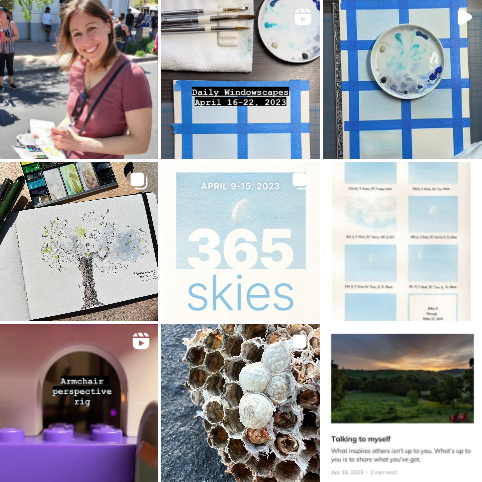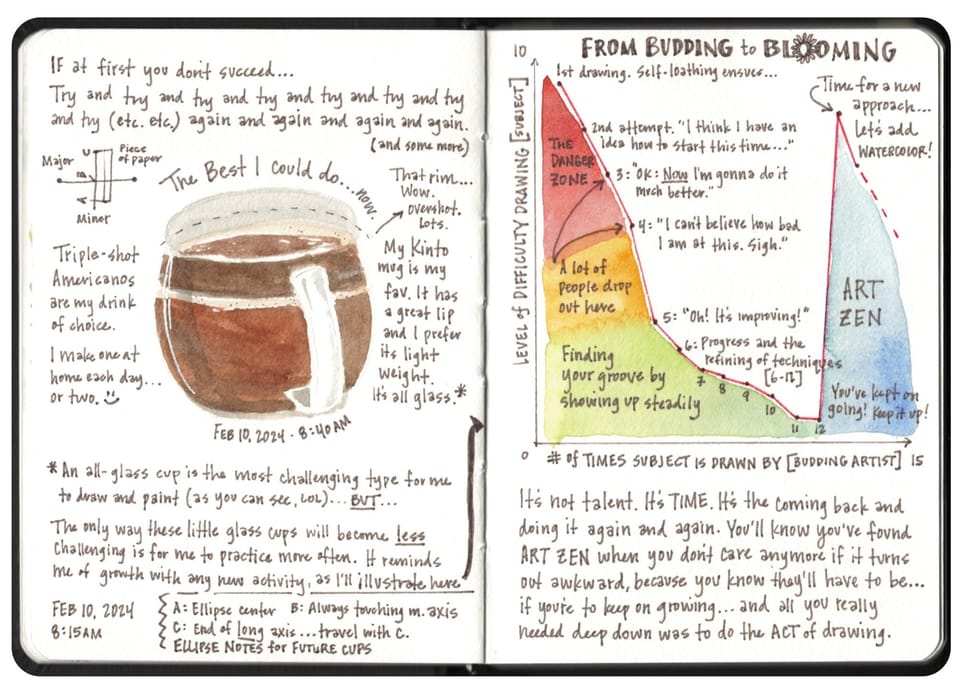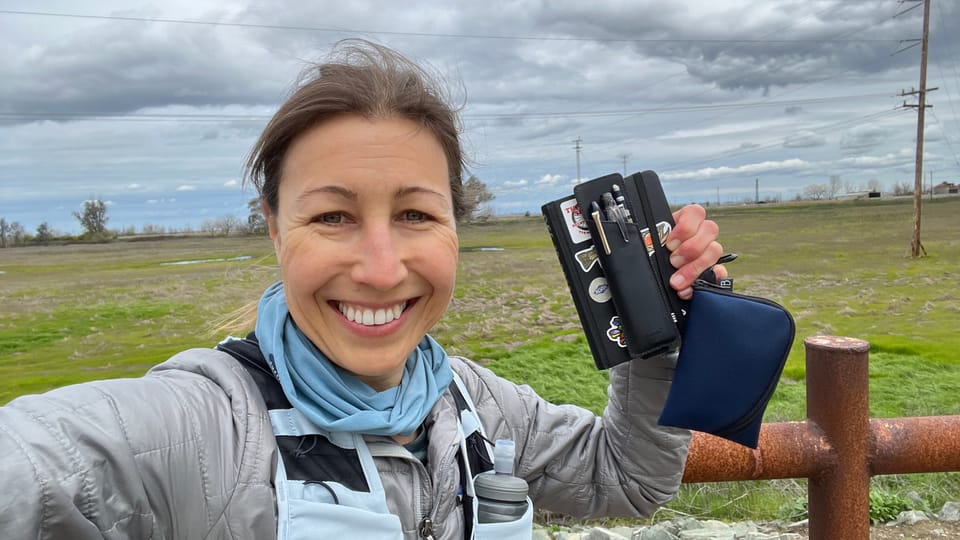Turning over a new leaf
Why my approach to art has come full circle and what I discovered along the way.
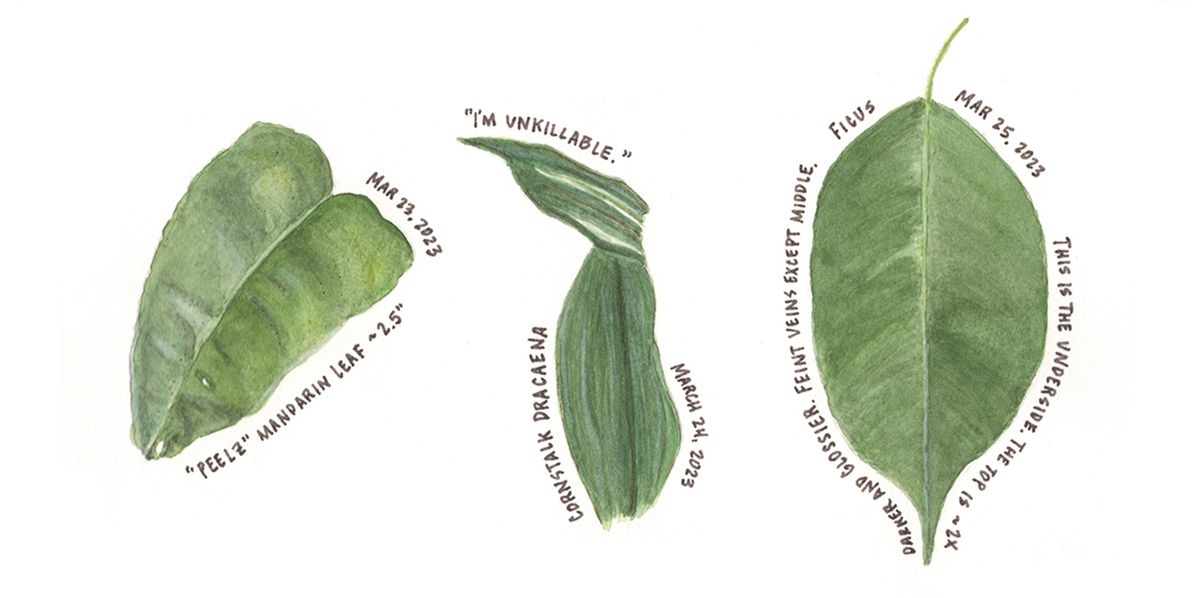
My very first nature journal sketch was of a maple leaf on some graph paper during a rainy day at the beginning of the pandemic. I had begun reading John Muir Laws’ wonderful book, The Laws Guide to Nature Drawing and Journaling (which I refer to as, The Laws Guide throughout), and the first exercise was to draw something from the natural world, preferably while in nature.
I was driving by my local park on the first day of spring 2020, when I decided to try the first exercise. I had no art supplies with me — just some graph paper and a pen in the trunk of my car — but I made my way out to a big maple tree, picked up one of its leaves, and began drawing what I observed.
The previous few days had been among the worst of my life, but in that moment, under that tree, drawing that leaf, the turbulence of the world and all my worries fell away. I got lost and I found peace.
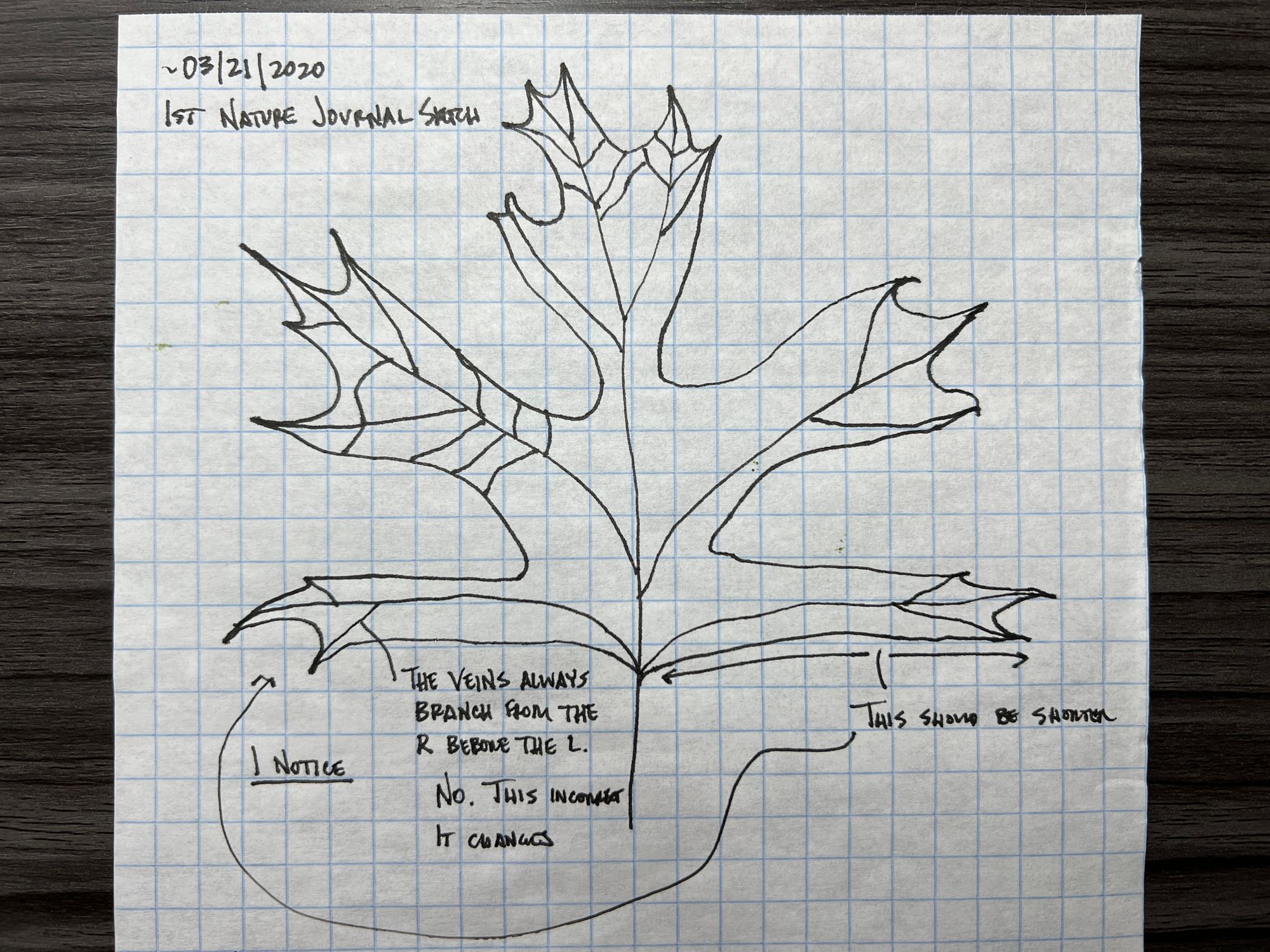
I would eventually go on to work through every exercise in The Laws Guide, purchasing a second copy to cut into smaller sections and carry with me wherever I went. The Laws Guide became a constant companion during solitary lunch breaks and long, uncertain evenings, and, while I didn’t realize it at the time, it also became a manual for a life better lived…
…but this article isn’t about The Laws Guide. That’s just one part of this story. This is about an important aspect of myself I discovered by way of The Laws Guide but never fully internalized, and how a course taught by Mike Hendley (more on that later) helped me uncover how art can serve me in more ways than I had thought possible.
Since my first readthrough of The Laws Guide, I’ve read several other books and have watched many hours of videos on drawing and technique, each with varying approaches for noticing and expressing the world in a sketchbook. It was through these books and videos that I was introduced to urban sketching and sketchnoting, both of which prioritize speed to capture moments as they unfold. Speedy sketching can also be an asset when nature journaling and is essential for gesture sketching quickly-moving subjects such as a birds, which can fly away in a wingbeat.
With increased exposure to these various approaches, I began pushing myself to work faster and looser, hoping I would develop my skill and technique along the way if I just kept at it long enough. Unfortunately, I neglected a key aspect of my own personal style in the midst of all that rushing: I forgot how to slow down while slowing down.
I’m a very organized, analytical, and methodical person. I love detail, nuance, deep-dives, and refining processes. Art is how I safely make messes while keeping my personal world nice and tidy. Sometimes, opening that valve means splashing lots of vibrant colors abstractly onto a page or using rough, jagged black lines to construct an imaginary worldscape (or both), but I didn’t realize my more dominant, organized, methodical, deep-dive self also needs a space in which to flow into the creative realm unfettered.
I knew slowing down to make time for art was critical to my well-being and have shared about this in-depth on Bethan Burton’s podcast, Journaling with Nature, but I thought merely slowing down to get lost in art somehow checked all those boxes.
Mike Hendley’s class, Textures and Depth with Graphite Pencil Drawing (Etchr Studio, 2023) helped me realize how much I had been rushing through my favorite part of the process: slowing down with a solitary subject long enough to get lost in its own unique nuance and details and the learning that can be achieved through iteration when re-visiting the same subject more than once (the subject of Mike’s class was an American Bullfrog).
Mike’s class was the perfect conduit to help me reconnect my technical, deep-dive self with a slow, meditative approach to sketching with graphite. Mike’s focus on observation and the deliberate process of noticing paired with building-up details and value through texture reminded me of how much I needed to slow down while slowing down and ignited a deliberate shift in how I approach my subjects.
Since Mike’s class, I’ve been allowing myself to take a lot more time with a subject and have been studying leaves from around our yard to help me practice texture, value, color, and detail. This methodical approach is allowing me to apply what I’m learning more deliberately and apply my discoveries as I go.
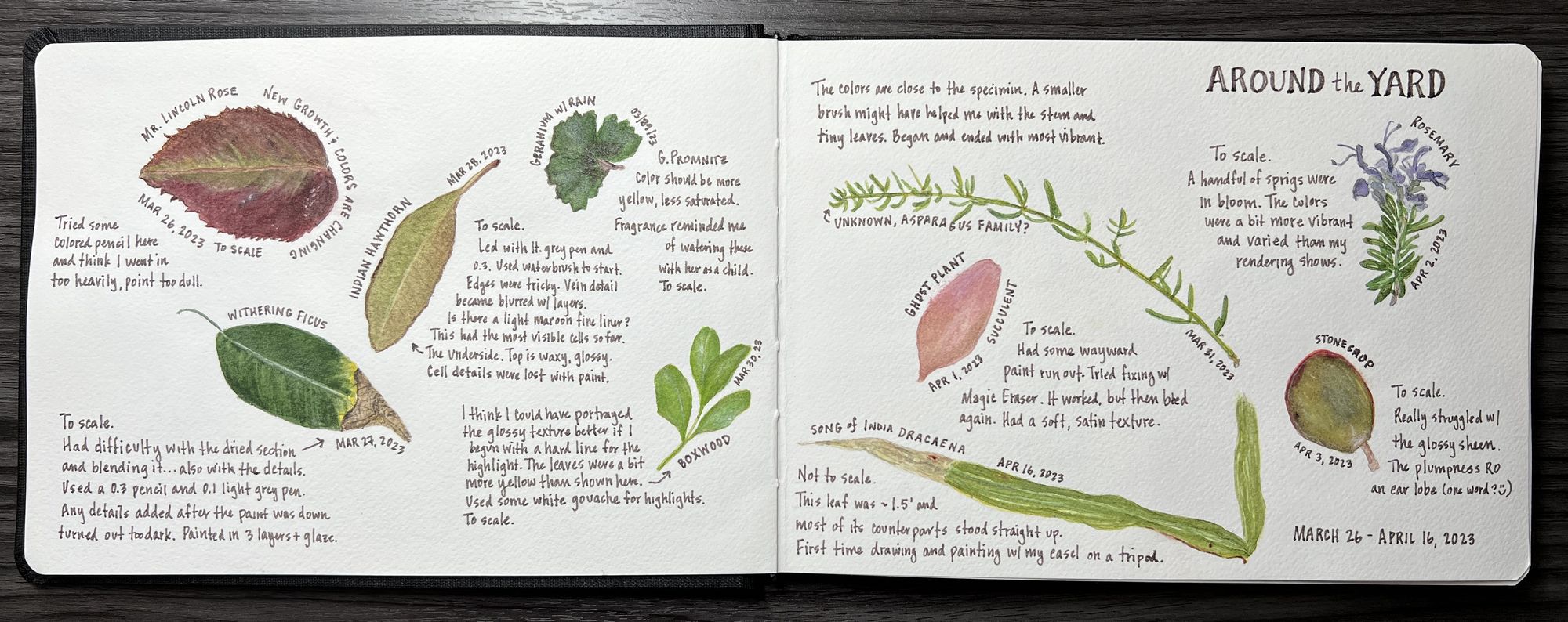
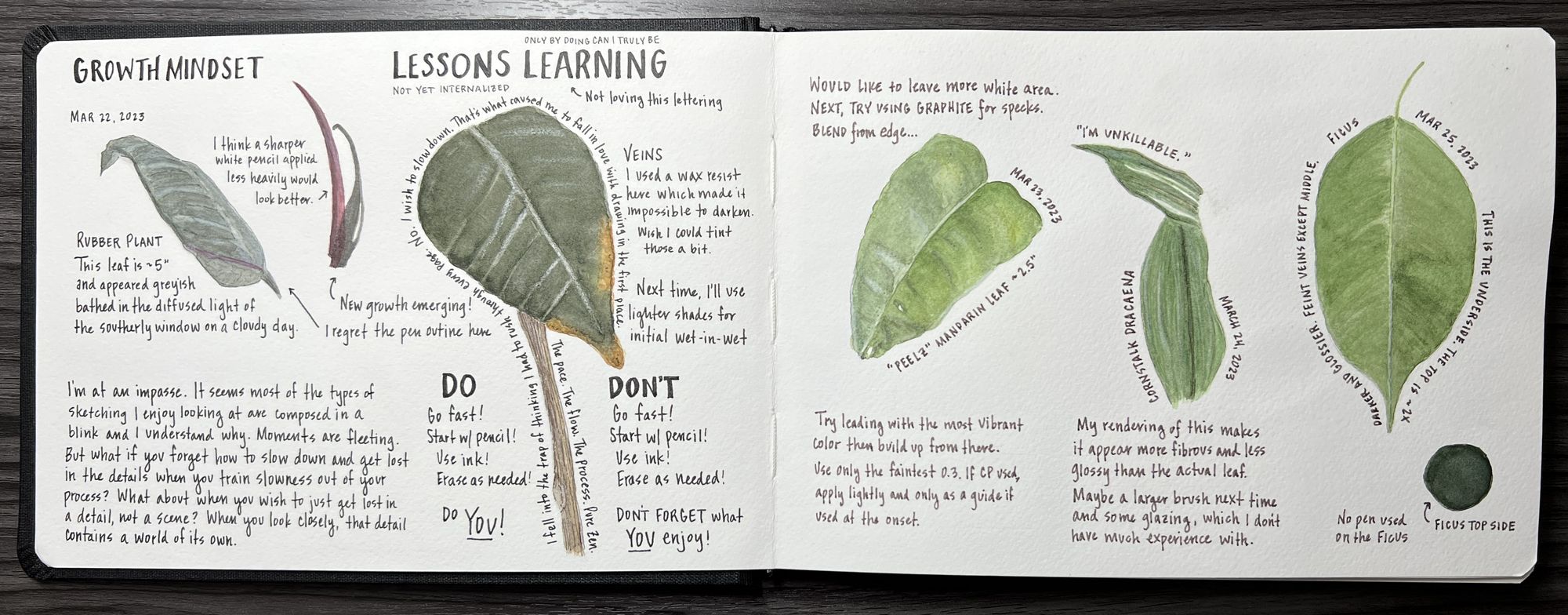
While it’s never been about the pretty picture for me, I do want to improve over time as I enjoy being able to look back at my sketches and the details I capture along the way. The better I can become at capturing a memory, the better I can remember the moment when I drew it in my sketchbook and the subject of my study.
Moving forward, I plan to apply a more balanced approach in my art practice. I’d like to continue to improve my ability to sketch quickly but would rather reserve a faster pace for situations where speed is required, such as when the subject is moving quickly or my time is limited. For subjects that are more or less stationary, I see a need in slowing and embracing a full Brookesian deep-dive, observing, iterating, and refining as I go. As for the little chaos beast within that needs to come out on occasion? Anything goes.
